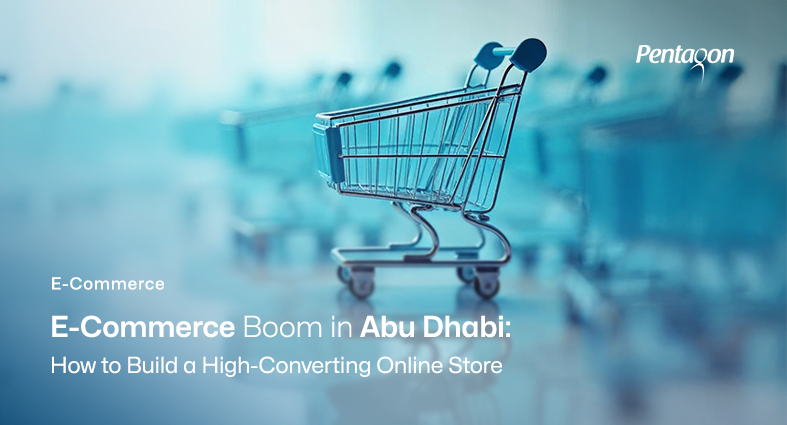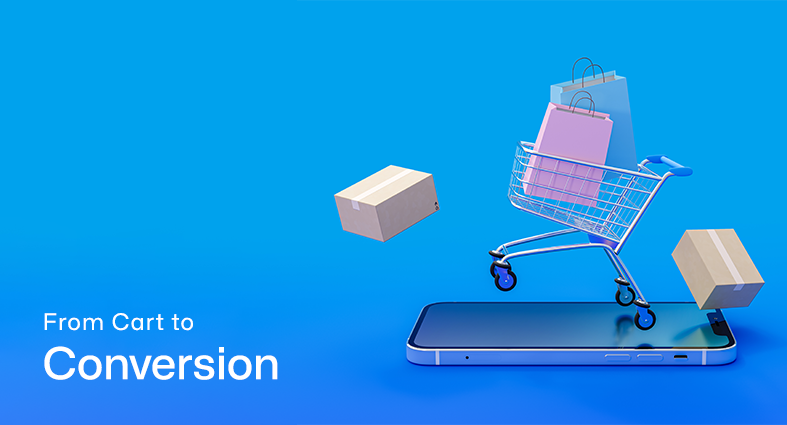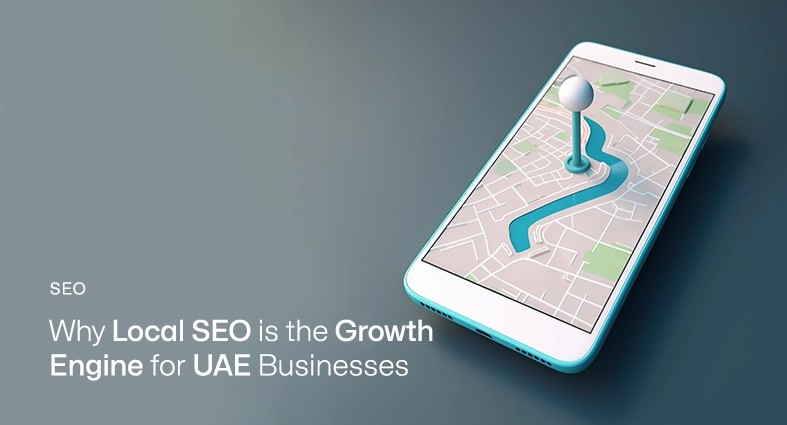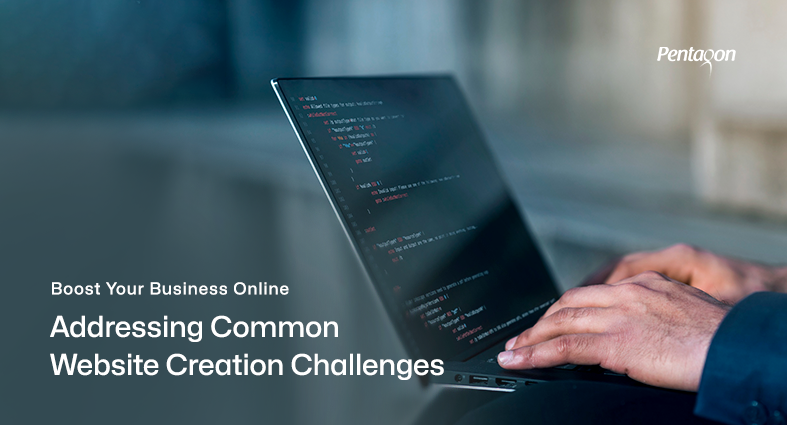The rise of e-commerce has changed how consumers shop, with more and more people turning to online stores for their shopping needs. With the increasing number of online shoppers, businesses need to create a seamless shopping experience that not only attracts potential customers but also converts them into loyal customers. A well-designed e-commerce website can make all the difference in creating a positive shopping experience for users, ultimately leading to increased sales and revenue. In this article, we’ll explore best practices for e-commerce website design, including user experience, UI/UX, design trends, navigation, conversion optimization, web design tips, and examples of successful e-commerce websites. Whether you’re launching a new e-commerce site or looking to improve an existing one, these tips and best practices will help you create a seamless shopping experience for your customers.
E-commerce UI/UX
The user experience (UX) and user interface (UI) are two critical elements of e-commerce website design. The UX refers to the overall experience a user has on your website, including how easy it is to navigate, how fast it loads, and how well it meets their needs. The UI refers to the design elements of your website, such as the color scheme, typography, and layout.
E-commerce UX
When it comes to e-commerce website design, user experience (UX) is critical to the success of your online store. E-commerce user experience refers to the overall experience that a user has while interacting with your website, from browsing through products to making a purchase. Here are some tips for optimizing your e-commerce website for user experience:
- Simplify Navigation: Your website’s navigation should be intuitive and easy to use. Use clear labels and categories to make it easy for users to find what they are looking for.
- Mobile Responsiveness: With the increasing use of mobile devices, it is essential to ensure that your website is compatible with mobile devices. Implement a responsive design to ensure your website looks great on any device.
- Clear Product Information: Provide clear and detailed product information, including product specifications, images, and reviews, to help users make informed purchase decisions.
- Streamlined Checkout Process: The checkout process should be easy and streamlined to minimize cart abandonment. Reduce the number of steps in the checkout process, provide multiple payment options, and allow users to save their shipping and payment information for future purchases.
- Personalization: Personalization can significantly improve the user experience by tailoring product recommendations and content to the user’s interests and preferences.
E-commerce UI
E-commerce UI (user interface) refers to the visual design elements of your e-commerce website. A well-designed UI can enhance the user experience and make your website more engaging and user-friendly. Here are some tips for optimizing your e-commerce website for UI:
- Consistent Branding: Use consistent branding throughout your website, including colors, fonts, and images, to create a cohesive and recognizable brand image.
- Visual Hierarchy: Use visual hierarchy to guide users’ attention to the most important elements on your website, such as product images and calls to action.
- Use White Space: White space can help make your website look clean and organized, making it easier for users to navigate and find what they are looking for.
- Use High-Quality Images: High-quality product images are essential for e-commerce websites. Ensure that your images are clear and high-resolution, allowing users to see the product in detail.
- Typography: Choose typography that is easy to read and complements your brand image. Use typography to guide users’ attention to the most important elements of your website.
E-commerce Design Trends
E-commerce website design is becoming more important than ever before. With the increasing number of online businesses, it’s essential to create an e-commerce website that stands out from the crowd and provides a seamless shopping experience to users. Keeping up with the latest design trends is an essential aspect of creating a successful e-commerce website. Here are some current e-commerce design trends to keep in mind when designing or updating your e-commerce website:
Minimalism
Minimalism has been a popular design trend for several years now and is still relevant today. Minimalistic e-commerce website designs focus on simplicity, using negative space and a limited color palette to create a clean and modern look. This approach allows the product to be the focal point and makes the website easy to navigate. Minimalistic designs not only look good but also improve the user experience by making it easy for users to find what they are looking for.
Custom Illustrations
Custom illustrations are a great way to add personality and character to your e-commerce website. Illustrations can be used to showcase products, create unique backgrounds, or add visual interest to the website. Custom illustrations can help your e-commerce website stand out from the competition and make it more memorable to users.
Video Content
Integrating voice search functionality allows users to search for products using voice commands, improving the user experience and making it easier for users to find what they are looking for. Voice search can help improve the accessibility of your e-commerce website, making it easier for users with disabilities to shop on your website.
Augmented Reality
Augmented reality (AR) is a new trend in e-commerce website design. AR allows users to visualize products in their own space, giving them a better understanding of the product’s size and appearance. This technology can significantly improve the user experience and increase the likelihood of conversion. With AR, users can see how the product looks in their own space, which can help them make a more informed decision about whether or not to purchase the product.
Personalization
Personalization is a growing trend in e-commerce website design. Personalization can be achieved through product recommendations, personalized messaging, or even a personalized shopping experience based on the user’s browsing and purchase history. Personalization can help improve the user experience by providing users with relevant product recommendations, making them more likely to make a purchase.
Voice Search
Voice search is becoming increasingly popular in e-commerce website design. Integrating voice search is becoming increasingly popular in e-commerce website design. Integrating voice search functionality allows users to search for products using voice commands, improving the user experience and making it easier for users to find what they are looking for. Voice search can help improve the accessibility of your e-commerce website, making it easier for users with disabilities to shop on your website.
Mobile-First Design
With the increasing use of mobile devices, designing for mobile has become essential. The mobile-first design focuses on designing for the mobile experience first, ensuring that the website is optimized for mobile users. Mobile-first design can help improve the user experience by making it easy for users to navigate your website on their mobile devices.
E-commerce Website Navigation
Effective navigation is critical for e-commerce websites to ensure that users can easily find the products they are looking for. Navigation refers to the organization and structure of your website’s pages and how users move through them. A clear and intuitive navigation system can improve the user experience, increase engagement, and ultimately lead to more sales. Here are some tips for designing effective navigation for your e-commerce website:
- Simple and Consistent: The navigation menu should be simple and easy to use, with clear labels and logical categories. Consistency is also key, with the menu appearing in the same location on every page and maintaining the same structure throughout the website.
- Clear Hierarchy: The navigation menu should have a clear hierarchy, with main categories and subcategories organized logically and intuitively. This helps users understand the organization of the website and find what they are looking for quickly and easily.
- Search Bar: A search bar is essential for e-commerce websites, allowing users to quickly find the products they are looking for. The search bar should be prominently displayed and easy to use, with auto-suggestions and filters to help users refine their search.
- Breadcrumb Trail: A breadcrumb trail is a navigation aid that shows users where they are in the website’s hierarchy and how they got there. This can help users understand the organization of the website and make it easier for them to navigate back to previous pages.
E-commerce Conversion Optimization
E-commerce conversion optimization is the process of improving your e-commerce website to increase the likelihood of conversion. Conversion optimization focuses on improving the user experience, making it easier for users to find what they are looking for and encouraging them to take action. Here are some tips for optimizing your e-commerce website for conversion:
- Clear CTAs: Your call-to-action (CTA) is one of the most critical elements of your e-commerce website design. Your CTA should be clear and visible, with contrasting colors to make it stand out. Use language that encourages users to take action and makes the process of completing the action as straightforward as possible.
- Reviews and Testimonials: Reviews and testimonials can significantly impact the user’s decision to purchase. Displaying reviews and testimonials prominently on your website builds trust and credibility with potential customers. Ensure that reviews and testimonials are from real customers and are up-to-date.
- Discounts and Promotions: Offering discounts and promotions can be a great way to encourage users to take action. Ensure that your discounts and promotions are displayed and easy to understand. Use urgency by setting a deadline for the promotion, creating a sense of urgency for users to take advantage of the offer.
- Use High-Quality Images: High-quality images are essential for e-commerce website design. Use high-quality images that showcase the product from different angles and allow users to zoom in for a closer look. Use videos and 360-degree views to provide users with a better understanding of the product.
E-commerce Web Design Tips
E-commerce web design plays a crucial role in creating a successful online store. By keeping your website visually appealing, using clear and concise copy, incorporating social proof, and continually testing and optimizing, you can create a user-friendly and engaging e-commerce website that drives sales and grows your business. Here are some e-commerce web design tips to keep in mind when designing your website:
- Make it visually appealing: Visually appealing design elements, such as high-quality product images, can help capture the attention of potential customers and increase the likelihood of conversion. Use high-quality images and videos to showcase your products, and incorporate visual elements that align with your brand’s style and tone.
- Use clear and concise copy: Clear and concise copy can help customers understand your products and make informed purchasing decisions. Use short and straightforward sentences, bullet points, and headlines to make your content easy to read and understand.
- Incorporate social proof: Social proof, such as customer reviews and ratings, can help build trust and credibility with potential customers. Incorporate social proof into your website design by displaying customer reviews and ratings prominently on product pages.
- Test and optimize: Finally, it’s essential to test and optimize your e-commerce website design continually. Use tools such as A/B testing and heat mapping to identify areas for improvement and optimize your website design to improve the user experience and increase the likelihood of conversion.
E-commerce Design Examples
When it comes to designing an e-commerce website, it can be helpful to look at examples of other successful e-commerce websites. By focusing on minimalism, custom illustrations, video content, personalization, augmented reality, mobile-first design, and other key elements, websites create engaging and user-friendly shopping experiences that drive sales and grow their businesses. As you design your e-commerce website, take inspiration from these examples and consider how you can incorporate these trends and best practices into your website design.
- Nike: Nike’s e-commerce website design is a great example of minimalism in action. The website uses a simple black-and-white color scheme with high-quality product images to create a clean and modern look. The website is easy to navigate, with clear calls to action and a focus on the product.
- Warby Parker: Warby Parker’s e-commerce website design incorporates custom illustrations and personalized messaging to create a unique and engaging shopping experience. The website uses a simple color palette and clean typography to make the product the focal point.
- Sephora: Sephora’s e-commerce website design incorporates video content and personalization to create a highly engaging shopping experience. The website uses personalized product recommendations and a personalized shopping experience based on the user’s browsing and purchase history.
- Allbirds: Allbirds’ e-commerce website design is a great example of mobile-first design in action. The website is optimized for mobile users, with simple and intuitive navigation and a focus on the product. The website also incorporates custom illustrations to add visual interest.
Conclusion
Creating a seamless shopping experience is crucial for any e-commerce website. By focusing on user experience, design trends, navigation, conversion optimization, and implementing best practices, you can create a user-friendly and engaging online store that attracts and converts potential customers. By following these tips and looking to successful e-commerce websites for inspiration, you can create an effective e-commerce website design that drives sales and grows your business. If you need help with e-commerce website designing and e-commerce website development, Pentagon is here to help. Contact us today to learn more about our e-commerce website design services.
services
Feel free to send us a message.
Please, share your thoughts, and let's chat over a cup of tea.



















